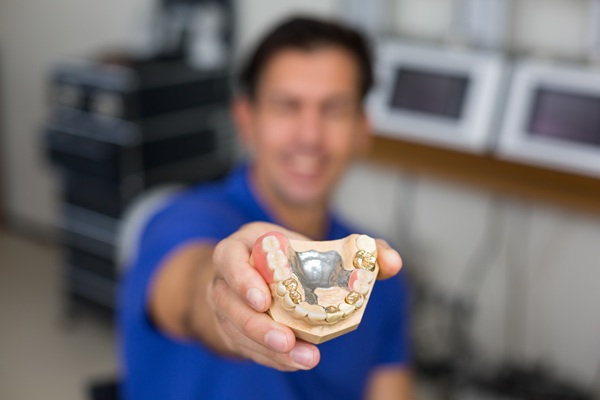A Step-by-Step Guide to Getting a Dental Inlay

A dental inlay is often necessary for teeth that are in bad shape, whether it be due to cavities or accidental injuries such as cracks or chips. However, among dental restorations, inlays are not the most common type. Most people are familiar with dental fillings or crowns, but general dentists also recommend dental inlays for additional types of problems. Because dental inlays are not as familiar to most people, it is a good idea to review how they work and what the process is like. Ready to learn more?
What are dental inlays?
Dental inlays are indirect dental restorations that are placed in between the cusps of a tooth. They are custom created in a dental lab, which requires patients to visit their dentist's office multiple times throughout the process. Dental inlays are typically made of composite resin or porcelain, depending on the patient's desire and the dentist's recommendation. Both materials can be made to match the patient's original tooth color, which makes for a discreet and aesthetically-pleasing restoration.
A step-by-step guide to dental inlay placement
During the first appointment, the dentist will numb the treatment area using a local anesthetic, ensuring the patient will feel little to no discomfort. Once the area is numb, the dentist will use a dental drill to remove dental decay from the tooth. If there is a crack or chip in the tooth, the dentist will use a different dental tool to smooth the surface of the tooth.
Then, the dentist will take an impression of the tooth that requires the dental inlay. Then, the impression will be sent off to the dental lab. The dentist will place a temporary seal over the treated tooth to protect it from bacteria while waiting for the permanent inlay.
Once the dental inlay is done, the patient will return to the dental office. The dentist will use dental cement to secure the inlay in place. A follow-up appointment may be required to ensure that the dental inlay fits and works as designed while remaining comfortable and healthy.
When dental inlays are needed
Dental inlays are typically recommended when a patient has a cavity that is too large for a dental filling. Additionally, they are recommended when the tooth doesn't have enough surface space for a dental crown to be used. Outside of cavities or tooth decay, dentists recommend inlays for patients that have minor cracks or chips in between the cusps of a tooth.
Reach out to our Concord office today
Would you like to learn more about the dental inlay process? The Treat Plaza Dental is here to answer any questions you may have. Reach out to our Concord office to learn more or to schedule a consultation.
Request an appointment here: https://www.treatplazadental.com or call Treat Plaza Dental at (925) 633-4552 for an appointment in our Concord office.
Check out what others are saying about our dental services on Yelp: Dental Inlay in Concord, CA.
Related Posts
Dental bonding is a simple and effective way to make immediate improvements to the smile by covering stains or fixing small chips, cracks, and gaps in the teeth, providing immediate improvement. The process is painless and quick and does not require major changes to the natural teeth. Those looking for an easy and affordable way…
Implant-supported dentures deliver stable chewing, confident speech, and a natural appearance for patients who struggle with loose plates or frequent sore spots. This approach anchors a full arch to dental implants, creating a secure foundation that resists slipping during meals and conversations. With careful planning, the treatment protects bone health, restores balanced bite forces, and…
A broken tooth can happen at any time — during sports, while eating, or from an unexpected fall. Regardless of the cause, an emergency dentist can help. Through prompt treatment, these dental providers offer an effective way to relieve pain and protect oral health. An emergency dentist can also help prevent complications like infection, nerve…
Gum disease, also known as periodontal disease, poses a critical threat to your oral health when it is left untreated. While this oral health condition may seem mild, it can progress rapidly. Not only can gum disease affect your oral health, it can impact your overall health and quality of life. Understanding the consequences of…
